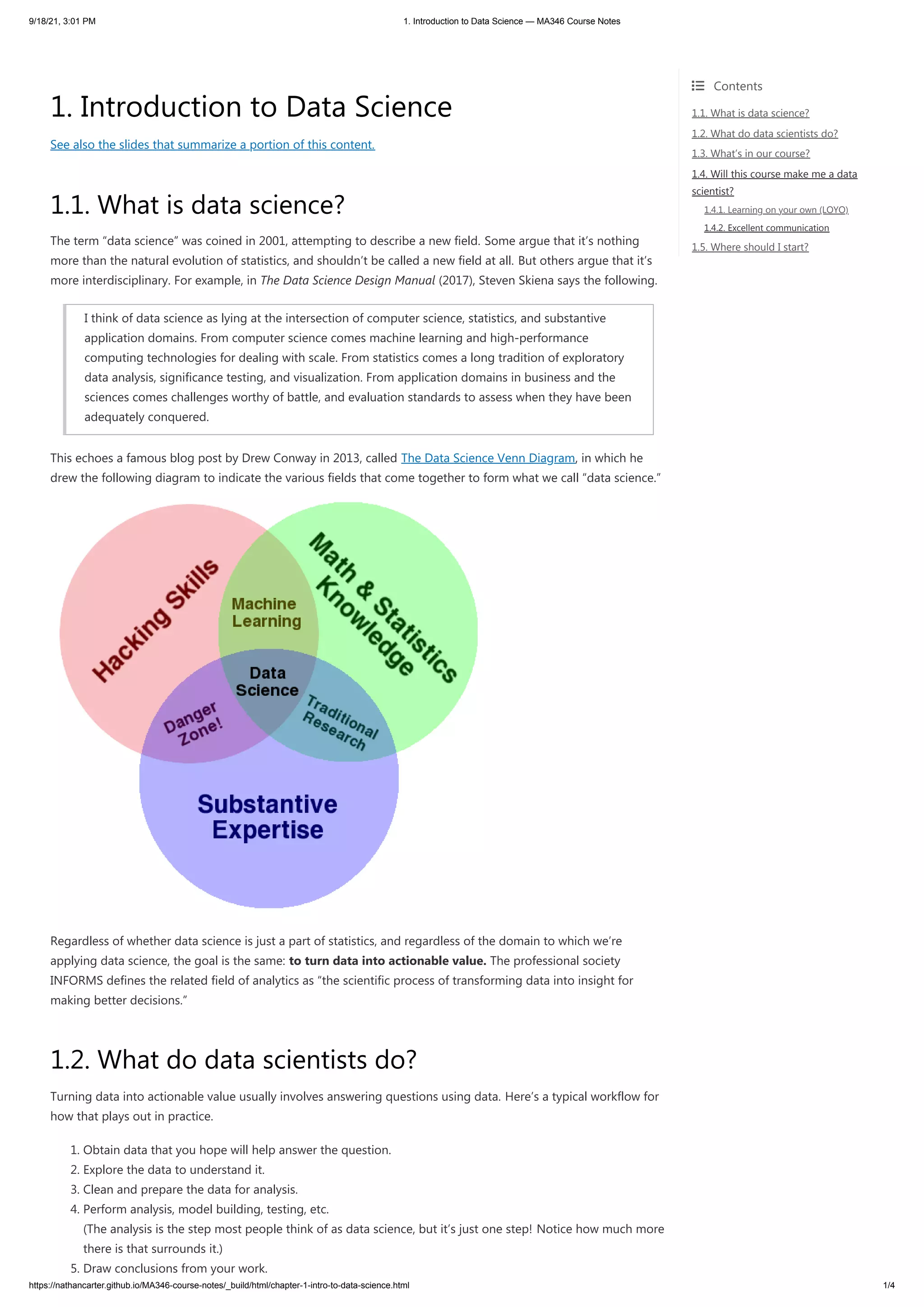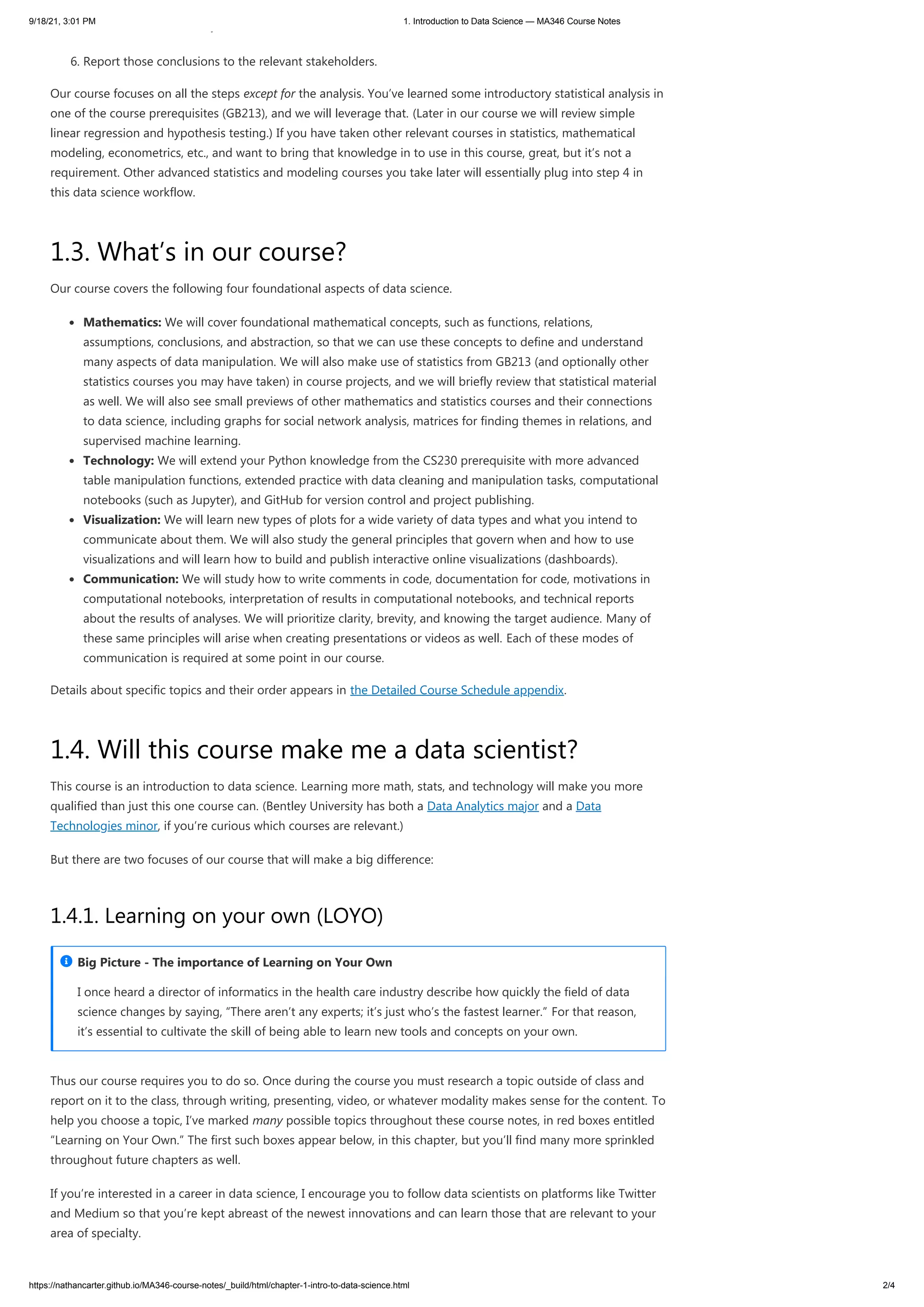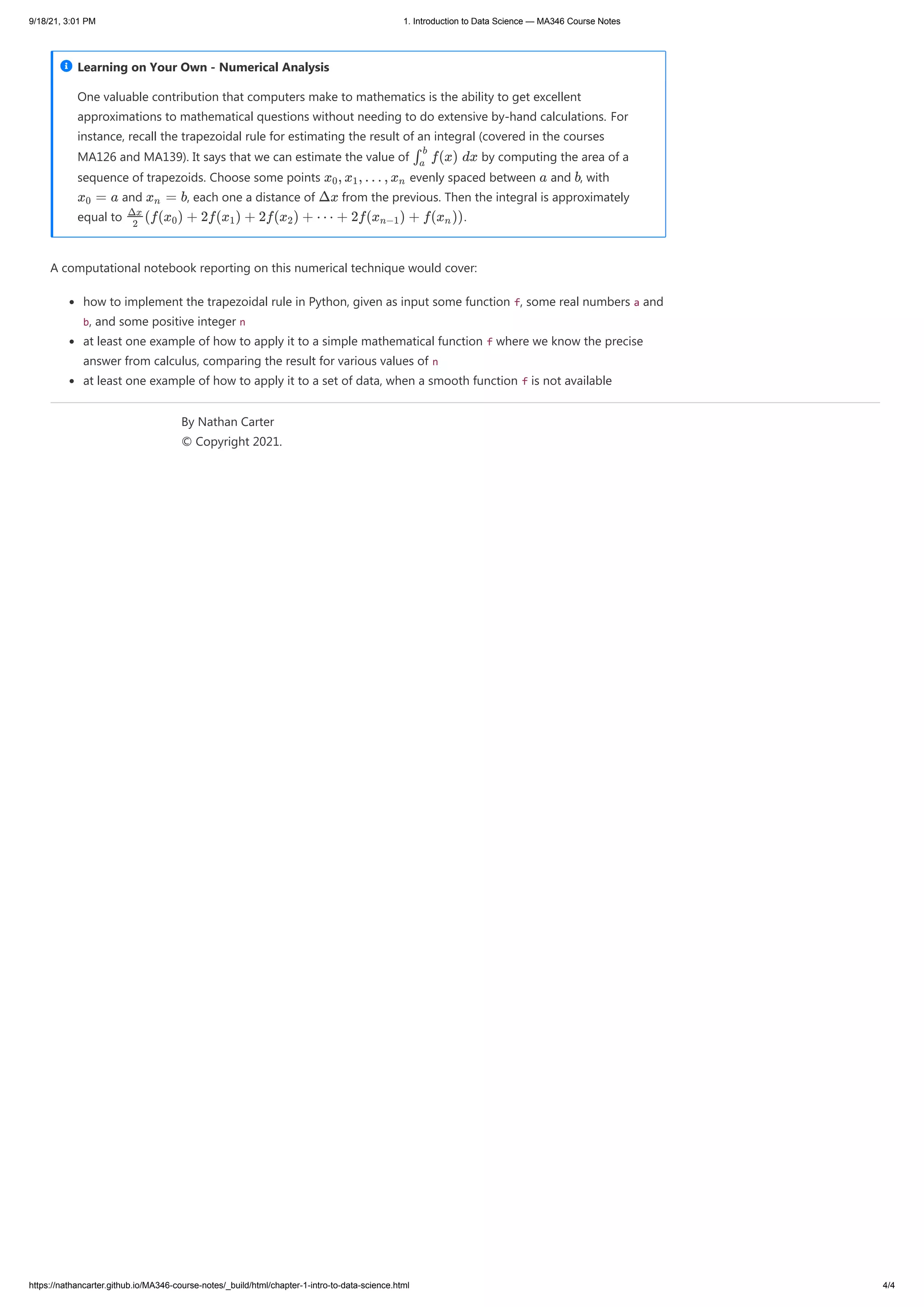This document provides an introduction to the concepts of data science. It defines data science as an interdisciplinary field drawing from computer science, statistics, and application domains. The document outlines the typical workflow of a data scientist, including obtaining data, exploring it, cleaning it, performing analysis, drawing conclusions, and reporting results. It describes the focus areas of the course as mathematics, technology, visualization, and communication skills. The document emphasizes the importance of learning new skills independently and communicating results effectively to non-technical audiences.



